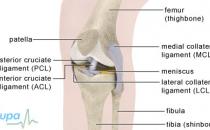Types of exercise
People exercise for different reasons. You may do strength training to bulk up your muscles, yoga to relax or football to improve your fitness. These types of exercise benefit your health in different ways. Whatever your reason for exercise, the best way to ensure all-round fitness and health is to aim for a mix of the main types – aerobic, strength and flexibility exercises.
This article describes the different types of exercise and the health benefits of each.
Aerobic exercise
Strength (resistance) exercise
Flexibility exercise
Action points
Aerobic exercise
For a healthy heart, you need to do aerobic exercise. This is any activity that uses oxygen, raises your heart rate and makes you slightly breathless. Not only does it keep your heart, lungs, blood vessels and muscles healthy, it also improves your fitness levels. Combine aerobic exercise with a balanced diet and you will be on the right track to maintaining a healthy weight.
Of the many types of aerobic exercise available there is bound to be one that suits you.
- Walking. This is a great type of aerobic exercise for all ages. It puts little strain on your joints so it’s good if you’re just starting to exercise.
- Cycling. This is good for improving your fitness and helps to strengthen your upper leg muscles. It helps with balance and is a good way of getting around.
- Swimming. This exercises your whole body and doesn’t stress your joints. You can move at your own pace and gradually increase how much effort you put in.
- Aerobics. This involves routines of exercises set to music with an instructor to guide you through and help make your workout fun. Why not make it a weekly thing and go with friends to keep you motivated?
- Running. This burns more calories than walking and improves your fitness. You hardly need any equipment and you can change your routes to make it more enjoyable.
- Football. Team sports are an excellent way to stay motivated because the team relies on and supports each other. You don’t need much equipment to play football and it gives you a good opportunity to make friends.
Aim to do aerobic exercise at a moderate intensity for 30 minutes on five or more days a week. Moderate intensity means that you should be able to talk without panting between your words. Walking quickly, pushing a lawnmower or playing doubles tennis help to keep your heart healthy and strong.
If you’re trying to lose weight or really improve your fitness, you may need to up your effort levels and do vigorous exercise. This is when your heart rate and breathing increase, and you won’t be able to talk without pausing for breath. Running, riding a bike up hill and swimming laps all count as vigorous exercise.
Adjust the intensity of your exercise depending on your goal. Try starting gently and gradually increase your effort level. As you get fitter, you may need to work harder to raise your heart rate and feel breathless – this is a good sign that your body is becoming more efficient at using oxygen.
Strength (resistance) exercise
Including strength training in your exercise programme may help improve your posture and give your body a more toned look. Plus, muscle burns more calories than inactive tissue, even when you’re resting, so building up muscle will help you stay a healthy weight – another bonus.
Strength training involves moving your muscles against some kind of resistance, which is why you will hear it called resistance training. You can use rubber bands, free weights (such as dumb-bells), weight-lifting machines or even simply your own body weight. Aim to do some strength training two or three times a week and work all the major muscle groups in your body. And don’t just go for the heaviest weight you can – find the right level that allows you to do a set of eight to 12 repetitions.
Although you could join a gym or lift weights at home, lots of everyday activities, such as carrying shopping or gardening can help tone and strengthen your muscles.
Flexibility exercise
If you don’t regularly stretch your muscles, they are at risk of becoming shorter and less elastic. This reduces how much you can move your joints and increases stiffness and your risk of injuries. Aim to do some flexibility exercises for a few minutes every day. These should stretch all the major muscles in your upper and lower body.
Yoga, pilates and tai chi include many exercises that focus on suppleness and flexibility. You gently ease and stretch your body into different positions, and then hold these while concentrating on your breathing. You might be surprised at how much they can increase your flexibility and strength, and they will help you to relax, and improve your circulation, balance and posture.
Action points
- Walking, football and swimming are excellent aerobic activities that need very little equipment – you can do them alone or with friends.
- Try gentle bending and stretching or yoga every day to help improve how much you can move your joints and prevent injuries.
- To keep your muscles and bones strong, try to do strength training activity two or three times a week.
Published by Bupa’s Health Information Team, August 2010.
Further information
The British Heart Foundation.
0300 330 3311
www.bhf.org.uk
Sources
- Get active, stay active. British Heart Foundation. 23 de abril de 2010. www.bhf.org.uk
- Starting to exercise. Bandolier. www.medicine.ox.ac.uk, published December 2001
- Beers MH, Fletcher AJ, Jones TV, et al. The Merck manual of medical information. sec. edition .New York: Pocket Books, 2003:31–6
- How much physical activity do adults need? Centers for Disease Control and Prevention. www.cdc.gov















